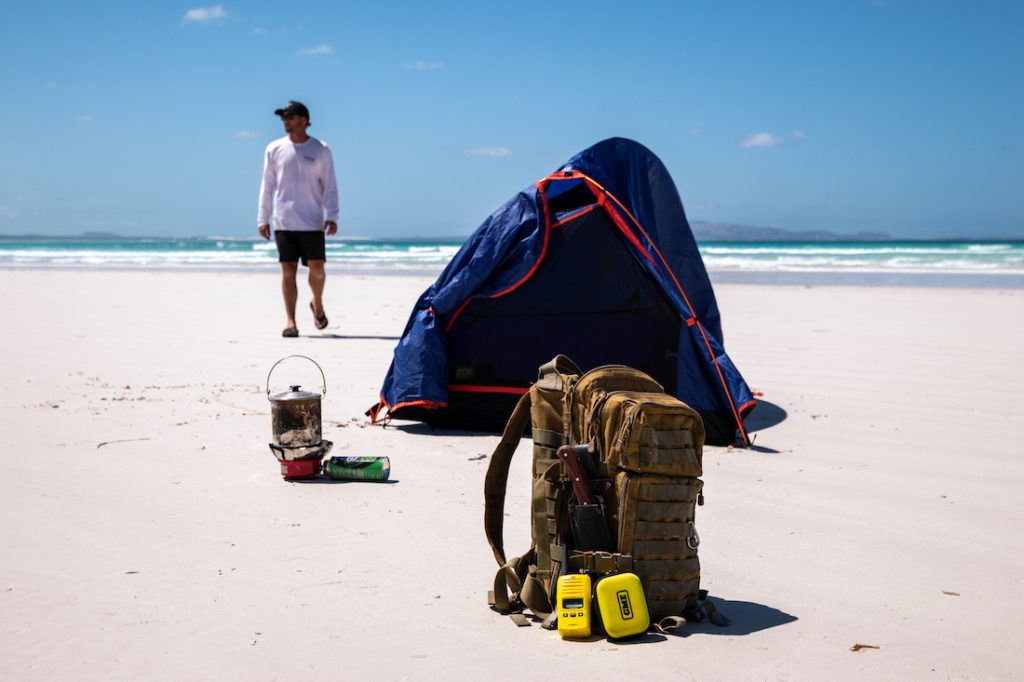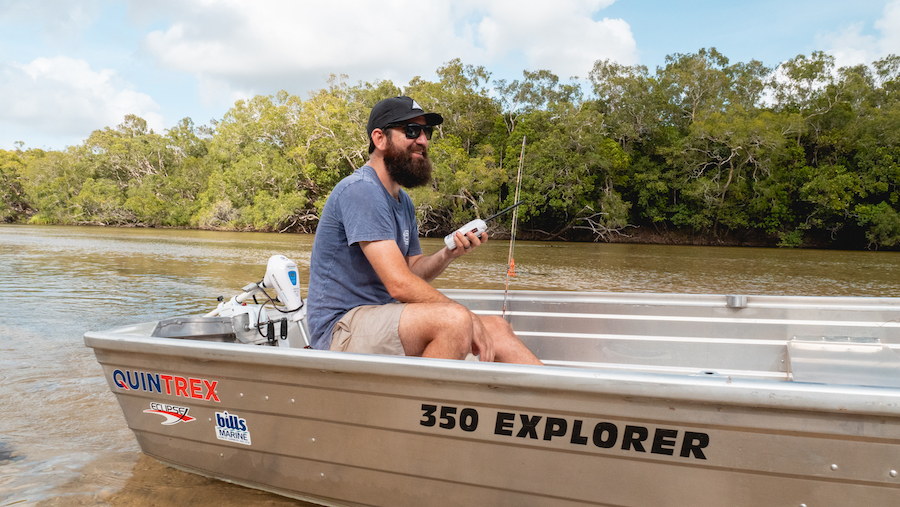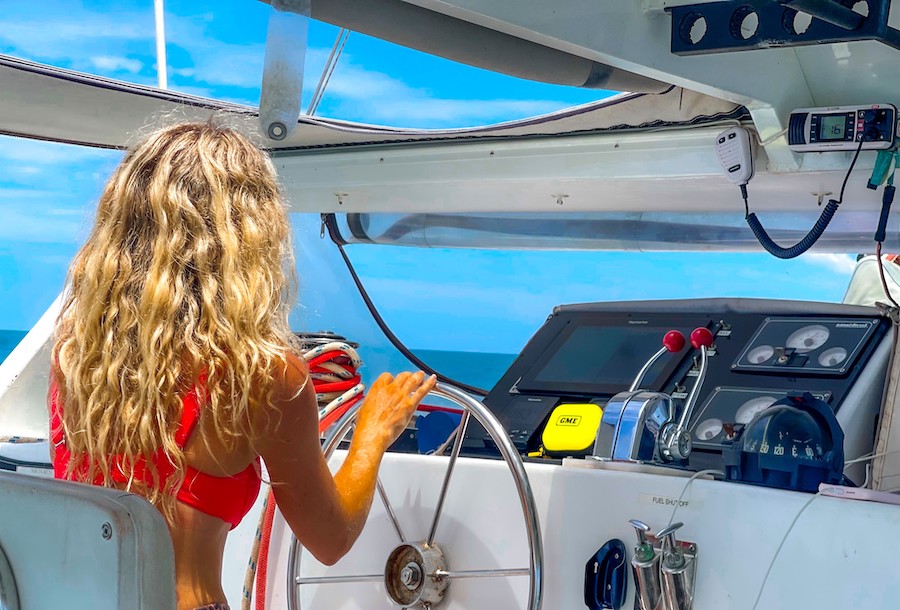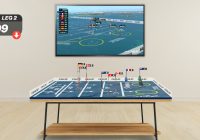After a record-breaking year of aquatic rescues, new data warns this number could rise again if Aussies hit the water unprepared this summer.
With less than a third of the nation (32%) confident they could rescue themselves in an aquatic emergency, one of Australia’s leading communications and safety brand, GME and adventurist and survival expert, Outback Mike, are urging Aussies to take caution and be prepared this National Rescue Awareness Week starting today, and running 24-30 November 2025.

The launch of National Rescue Awareness Week 2025 follows the release of new research revealing that most Aussies planning to jump into the water this summer are leaving safety behind. While most Aussies (65%) are planning aquatic adventures this summer, from recreational boating (34%) to snorkelling or diving (27%), few know how to save themselves in an emergency.
The data also reveals that Aussies are swimming against the current with basic water safety. 40% of Aussies would rely on ‘someone else knowing what to do’ in an emergency, and just 45% of the nation is confident they could tread water for over 30 minutes.
What’s more, only one-fifth (20%) of the nation is confident in reading tides, swells and weather conditions, and nearly half of the nation (48%) would rely on their mobile phone to call for help on the water – a risky move when offshore coverage is patchy at best.
After 50 gruelling days alone on a survival journey up the Great Barrier Reef, Michael Atkinson (aka Outback Mike) knows better than most that a few gear choices can make all the difference for a safe trip on the water.

“Being on the water is one of the most vulnerable places for a human. When conditions deteriorate or things go wrong, having the right gear and knowing how to use it is often the difference between life and death. Surviving depends on prior preparation and good decisions made in the moment.”
“People often get into trouble because they’re underprepared or they rely on the wrong tools.”
“Having a tool like an Emergency Position Indicating Radio Beacon (EPIRB) or a Personal Locator Beacon (PLB), knowing how to deploy it, and keeping it within reach can make all the difference when things go wrong.”
“Many people rely on smart phones to call for help. Whilst many smart phones these days are satellite capable, they don’t emit a continuous signal that rescue authorities can home in on. So if you’re adrift in a lifejacket you’re unlikely to be found, particularly at night.”
“I’ve spent years in some of the harshest environments across Australia, and the ocean is the one I worry about most. Without a life jacket and a PLB or EPIRB your survival chances are very low.
“Rescue starts before you hit the water, with the right mindset, knowledge, and gear.”
Giving Aussies the tools they need to explore safely, GME and Mike have come together to create a survival preparation guide featuring five key steps to safe aquatic-related adventures.
Tony Crooke, Safety Expert at GME, comments:
“We know that safety is built on preparation, planning, and the assurance that comes from knowing what to do if things don’t go to plan.”
“Last year saw a record number of rescues on the water, and far too many of them could have been prevented with the right equipment and safety know-how.”
“By extending our partnership with Mike this Rescue Awareness Week, we want Aussies to feel confident when they hit the water that they’ll always get back to shore safely”.
For the full water survival guide, please see below or click the link HERE to download.
For more information on GME’s full range of marine safety technology, click the link HERE.
Aquatic Survival & Rescue Essentials Guide
Australia’s waterways are stunning, but they can also be unpredictable.
For Australia’s second National Rescue Awareness Week, GME and survival expert Michael Atkinson (aka Outback Mike) have built a guide to help Aussies prepare for safer aquatic adventures. From boating to diving, these essentials could make all the difference if something goes wrong.
Pack the right gear and keep it protected
Every trip on the water should start with preparation, and the gear you pack can be the difference between a close call and tragedy. Phones and satellite messengers aren’t built for aquatic rescues – they can’t transmit the kind of continuous distress signal that rescue services can home in on. That’s why it’s essential to carry specialist emergency equipment, keep it in working order, and know where it is at all times:
- EPIRB (Emergency Position-Indicating Radio Beacon): The gold standard of emergency signalling for offshore boating and a legal requirement in most states when operating more than 2 nautical miles offshore in open water.
- PLB (Personal Locator Beacon): Lightweight and compact – ideal for kayaking, paddle sports, or coastal boating. These should be attached to your lifejacket (PFD) in case you fall overboard. Note: A PLB won’t satisfy mandatory carriage requirements in most states of Australia (some states allow a PLB in lieu of an EPIRB for jet ski riders).
- Stay reliable: Check expiry dates (and set an expiry date reminder in your mobile phone), test strobe lights (essential at night), protect from corrosion, and store in an easy-to-reach spot.
- Inspect everything: Lifejackets, flares, radios, and first aid kits all need regular checks – salt water is unforgiving, so your gear can deteriorate fast.
- Clothing: Dress for the conditions. In cooler climates, thermal layers or spray jackets can delay the onset of hypothermia if you end up in the water. In warmer environments, lightweight but protective clothing can reduce sunburn and heat exhaustion. Ideally, every inch of skin should be shielded from the sun.
- Food and water: Carry an emergency supply of fresh water and high-energy snacks. Dehydration and fatigue can set in quickly at sea, especially under the sun.

Know the water and the weather
Even the most expensive equipment won’t help if you don’t respect the conditions you’re heading into. Before each trip, take the time to understand the environment you’ll be navigating.
Check the forecast in detail, including wind, swell, and storm warnings, and keep monitoring throughout your trip. Remember that conditions on the water can shift far more quickly than they do on land.
For divers, carrying a PLB in a waterproof case is increasingly common. It’s a precaution that could be lifesaving if you surface far from your boat.
Communication is key
Always log your journey, either by registering with local marine rescue services (many of which have apps) or by telling a trusted contact your departure point, intended route, and expected return time.
Make sure your contact knows exactly what to do if you don’t check in when expected: call 000.
On the water, mobile coverage is often patchy, which makes VHF Marine radios a far more reliable tool for staying in touch with nearby rescue crews and vessels. Keep yours dry in a clear, waterproof soft case that allows voice communication. If you’re venturing further offshore, an EPIRB is a worthy addition (and usually a legal requirement) alongside your radio. Remember: mobile phones should never be your only connection – even satellite-capable phones and smartwatches can struggle to connect when wet and don’t emit a continuous signal that rescue authorities can home in on.
Practice before your departure
Confidence in an emergency doesn’t just come from having the right gear – it comes from knowing how to use it.
Before you set out, practise deploying your equipment in safe conditions. For instance, try rehearsing with your PLB in a swimming pool (without activating it) while wearing your lifejacket. Make sure it stays attached by a lanyard, that you can easily deploy the antenna, and that it’s mounted securely in a way that allows the antenna to remain upright.
Run a quick safety briefing with your passengers, walking them through where the safety gear is stored and how to use it. Just two minutes of explanation could save precious time in a crisis.
Think beyond technology, too. Carry visual signalling aids like sea dye, reflective strips, or mirrors – and practise using them. These can dramatically cut down rescue times by making you easier to spot from the air or sea.
Keep calm in an emergency
If something goes wrong, your state of mind will be just as important as the equipment you carry. Panic burns energy, clouds judgment, and reduces your chances of survival.
Instead, focus on conserving energy: stay afloat, keep warm, and signal for help. Make yourself as visible as possible with strobes, reflective gear, and flares or dye markers, ready to use the moment you see or hear rescuers nearby.
Equipment Checklist
- GME EPIRB (for offshore boating) and/or PLB (for in-shore/individual use)
- Lifejackets for all passengers (check condition and fit)
- Waterproof case for PLB if diving
- Flares, strobes, or sea dye for visibility
- VHF Marine Radio or satellite communicator for backup communication
- First aid kit
- Adequate water supply (minimum 4 litres per person per day)
- Navigation tools (map, compass, GPS device)
- Weather-appropriate clothing and thermal protection where needed
- Light sources for night-time signalling (such as flares or flashlights)
- Food supplies and emergency rations (if relevant to the journey)
- Minimum safety equipment requirements for state to state and depends on the type and length of your vessel. You must refer to your state’s specific rules and ensure compliance.

GME National Rescue Awareness Week 2025 – Aquatic Safety Survey Research Summary
Aussies are ready for a day on the water
- Inspired by our beautiful coastline, beaches and rivers, two-thirds of the nation (65%) is planning to spend a day on the water this summer, with the most popular activities being:
- Recreational boating (34%)
- Offshore fishing (28%)
- Kayaking or paddleboarding (27%)
- Snorkelling or diving (27%)
- However, less than a third of us (32%) are confident that we could rescue ourselves in an aquatic emergency
Aussies are neglecting some crucial safety preparations when it comes to their water adventures.
- When it comes to preparing for a boating or fishing trip, 40% of Australians say checking the forecast and tide conditions is the most important piece of preparation
- Despite this, we’re largely ignoring other crucial steps:
- Just over a quarter (27%) of us say ‘ensuring everyone has a life jacket’ is our top priority
- Packing emergency safety gear was the priority for just 12% of the nation, highlighting that we don’t truly understand the importance of being properly prepared for an emergency
- Worryingly, just 3% of respondents grasp the importance of proper first-aid training
Aussies are gambling on mobile phones on the water
- Nearly half of the nation (48%) is comfortable relying on their mobile phone to call for help on the water – a risky move when coverage is patchy at best offshore
- The top five items Aussies are most likely to take with them for a day on the water are:
- Life jackets (80%)
- Mobile phones (78%)
- Extra drinking water (67%)
- First aid kits (66%)
- And a torch/flashlight (51%)
- The number of Aussies who would pack an Emergency Position-Indicating Beacon (EPIRB) drops to 45%, while VHF radios drop to 34% – must-have comms gear when mobile service is lost
- Three out of ten Aussies (30%) feel they wouldn’t need to pack safety gear on shorter trips
- Worryingly, 25% of the nation wouldn’t bring a lifejacket with them if they thought they would stay close to the shore

Our water safety knowledge is falling short
- Three-quarters of the nation (76%) agree that they would panic in an emergency situation on the water
- 40% of Aussies would rely on ‘someone else knowing what to do’ in an emergency
- Just 45% of the nation is confident they could tread water for over 30 minutes
- Only one-fifth (20%) of the nation is confident in reading tides, swells and weather conditions
- Under a third (29%) would know how to activate an EPIRB or use a VHF radio
- Less than a quarter could perform a man-over-board rescue (22%)
- 60% of Aussies also believe that rescue services can easily find them on the water if something goes wrong. But without proper preparation and gear, danger becomes very real
Aussies agree, safety on the water comes down to experience
- When it comes to emergencies on the water, 40% of the nation agrees that a lack of experience is the biggest cause. This is followed by:
- Bad weather and poor conditions (30%)
- Equipment failure (9%)
- Not carrying safety gear (9%)
- And poor navigation (6%)
For more information visit www.gme.net.au








